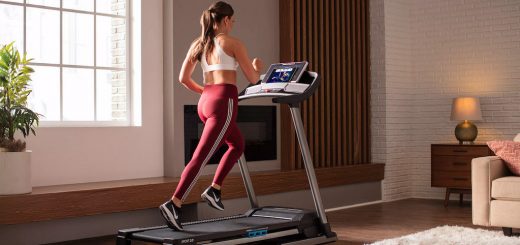What is diastasis and how can the risk be reduced through exercise?
Diastasis is a separation of the rectus abdominis muscles into two parts. It is caused by intense stretching of the abdomen. This phenomenon is often encountered at the end of pregnancy or after the birth of the baby, but there are solutions to reduce its amplitude. I discover how to limit diastasis recti with the #ProFormTeam exercises, which are guaranteed to be safe during pregnancy!
What is diastasis recti and is it dangerous?

Diastasis recti is a separation of the two sides of the rectus muscles in front of my stomach. This phenomenon is usually not serious and is related to strong pressure on the abdominal wall. Although pregnancy is the most common cause, this separation of the rectus muscles can occur in various contexts, in both men and women. Excess weight in the abdomen combined with a lack of muscle support in the trunk can cause it to occur, as can repeated heavy lifting.
When it becomes more pronounced, this phenomenon can lead to:
- Reduced ability to mobilise the muscles of the abdomen.
- Difficulty lifting.
- Lower back pain.
- In rare cases (pronounced and untreated diastasis): pelvic organ prolapse or mild urinary incontinence (especially with sneezing and stress).
Almost half of all pregnant women are affected by diastasis recti to a greater or lesser extent. Fortunately, diastasis can be minimised with simple exercises before and after birth.
How do I know if I have diastasis?

Here is how to check for diastasis of the rectus abdominis, starting 3 just days after a vaginal delivery, but 6 weeks after a caesarean section:
- I lie on my back with my legs bent and my feet flat on the floor.
- I lift my head slightly and the tops of my shoulders.
- I hold this position while applying a small amount of hand pressure to the centre of my rectus muscles, just below my ribs.
- I run my hand along a line from the middle of my belly to below my navel.
- If I feel a gap between my muscles, I check its width:
- 1 finger: everything is fine, strengthening my abs and lumbar once I start training again will ensure I am in good shape.
- 2 fingers: I have mild to moderate abdominal diastasis. I can do targeted training and seek advice from a health professional.
- 3 fingers: I have severe diastasis. In this case, it is recommended that you seek the advice of a physiotherapist or a health professional specialising in post-partum training to find out how to mobilise your abs.
Exercises to prevent diastasis

I can minimise my risk of developing significant diastasis with exercises that target the abdominal muscles, pelvic floor and diaphragm during pregnancy and after my baby is born:
- I use the Swiss Ball to exercise my deep muscles:
- Sitting on my fitness ball, I place one hand on my lower abdomen and the other on my rib cage.
- I breathe in slowly, practising abdominal breathing.
- I breathe out through my mouth, pursing my lips and at the same time contracting my pelvic floor muscles as if I were holding back the urge to urinate. I imagine my belly button rising upwards towards my back.
- When I feel muscle tension in my abdominal muscles, I hold the position for 5 seconds, breathing normally.
- I relax my pelvic muscles while breathing out deeply.
- This Sahrmann exercise also mobilises the deep muscles:
- Lying on my back, I bring my knees to my chest, one after the other.
- I rest my legs on the floor, starting with the one I lifted first.
- I start again, alternating sides.
- I can support my lower back with a pillow.
- The plank (with my knees on the ground if I prefer) is also an interesting tightening exercise for the abdominal muscles. However, at the end of pregnancy, it could become uncomfortable, or even counterproductive, by increasing abdominal pressure. I switch to another exercise if this one doesn’t work for me.
- I can walk slowly carrying a fairly heavy dumbbell in one hand, changing hands regularly.
I rely on low-intensity exercises repeated several times a day and listen to the signals sent by my body. If I’m tired, I rest. While anticipating my pregnancy, I can limit the spread of my abdominal muscles and strengthen my body gently, so that I’m ready for all the challenges that life as a new mother brings!
I’m reading on to find out how to set up my postpartum workout routine with advice from the #ProFormTeam!
Check out our Personalised Training page for more advice.







